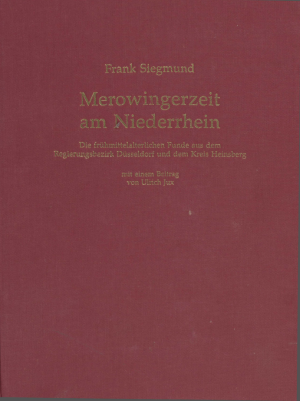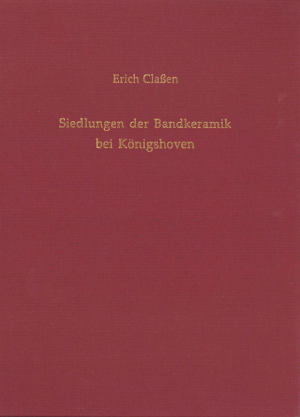Rheinische Ausgrabungen
The LVR-State-Service for Archaeological Heritage is publishing the series ‘Rheinische Ausgrabungen’ since 1968. It presents research on archaeological sites in the Rhineland, ranging from the Palaeolithic to modern times. The monographs and occasional anthologies also include scientific studies and research from neighbouring disciplines. One focus is on the publication of theses.

Sponsored by:
![]()
Editor since 2019:
Dr. Erich Claßen, LVR-Amt für Bodendenkmalpflege im Rheinland
Contact:
LVR-Amt für Bodendenkmalpflege im Rheinland
Endenicher Straße 133
53115 Bonn
E-Mail: michaela.aufleger@lvr.de
E-Mail: wiebke.hoppe@lvr.de
Coming Soon
Merowingerzeit am Niederrhein
The early medieval grave finds from the Lower Rhine area are extensively and comprehensively documented (as of 1988). Based on a new typology, topo-chronological analyses are conducted on all suitable cemetery sites: Krefeld-Gellep, Cologne-Junkersdorf, Cologne-Müngersdorf, Düsseldorf-Stockum, and Duisburg-Walsum. This is followed by a seriation/correspondence analysis of all suitable men's graves (316 graves, 158 types) and women's graves (215 graves, 124 types). The synthesis of both methodological approaches results in a new chronology, which covers the period 400 – 740 AD with 12 phases and is applicable beyond the Lower Rhine as well. Further analyses involve Xanten-St.Viktor and Rill.
Published so far
Siedlungen der Bandkeramik bei Königshoven
Based on almost 40 years of archaeological field research in the lignite open-cast mine near Garzweiler, this multi-award-winning doctoral thesis analyses 15 settlements of the first farmers in the Rhineland. The focus is on settlement development and structures, which enable, among other things, model calculations on land use. Other economic and social aspects are - based on archaeological finds - examined in the work using methods of Social Network Analysis. They reveal changes in the structures within early farming society - i.e. social change - that was a decisive factor in its demise.








